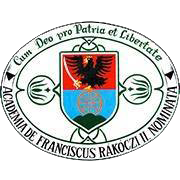Please use this identifier to cite or link to this item:
https://dspace.kmf.uz.ua/jspui/handle/123456789/3695Full metadata record
| DC Field | Value | Language |
|---|---|---|
| dc.contributor.author | Yaroslav Sheverya | en |
| dc.contributor.author | Kateryna Hanusych | en |
| dc.contributor.author | Шеверя Ярослав | uk |
| dc.date.accessioned | 2024-05-19T16:56:39Z | - |
| dc.date.available | 2024-05-19T16:56:39Z | - |
| dc.date.issued | 2024 | - |
| dc.identifier.citation | In Csernicskó István et al. (szerk. biz.): Digitális gazdaság és fenntartható fejlődés: a pénzügy, számvitel, menedzsment, valamint társadalom- és viselkedéstudomány legújabb trendjei. II. Rákóczi Ferenc Kárpátaljai Magyar Főiskola által a "Rákóczi-napok" alkalmából rendezett IV. Nemzetközi Gazdaságtudományi Konferencia tudományos anyagai (Beregszász, 2024. március 26-27.). Beregszász, II. RFKMF, 2024. pp. 256-258. | en |
| dc.identifier.isbn | 978-617-8276-91-1 | - |
| dc.identifier.uri | https://dspace.kmf.uz.ua/jspui/handle/123456789/3695 | - |
| dc.description.abstract | Abstract. A significant mechanism for allocating the cost of fixed assets to expenses and the cost of production is depreciation. The amount of accrued depreciation will impact financial results, the residual value of non-current assets in the balance sheet, and other important indicators of financial reporting. The organization of fixed asset accounting should ensure a complete and objective reflection of the actual physical and moral wear and tear of fixed assets. The question of depreciation and its reflection in accounting has been explored in the works of Petruk, O. M., Khvist, V. V. [1,2], Popova V.D., Kizima N.M. [3], Garasym P. M. [4], Kontseva V., Boyko N., Masalitina V. [5], Veriga Yu. A., Novokhatka N. O. [6], Yatsko M.V., Yatsko L.B [7]. Depreciation is the systematic allocation of the cost of fixed assets over various periods during their use. This entails the gradual expensing of the cost of fixed assets over the duration of their operational life. | en |
| dc.language.iso | en | en |
| dc.publisher | II. RFKMF | en |
| dc.rights | Attribution-NonCommercial-NoDerivs 3.0 United States | * |
| dc.rights.uri | http://creativecommons.org/licenses/by-nc-nd/3.0/us/ | * |
| dc.subject | accounting | en |
| dc.subject | fixed asset | en |
| dc.title | Organization of accounting for fixed assets depreciation | en |
| dc.title.alternative | Організація бухгалтерського обліку амортизації основних засобів | en |
| dc.title.alternative | A tárgyi eszközértékcsökkenés számvitelének megszervezése | en |
| dc.type | dc.type.extendedAbstract | en |
| Appears in Collections: | Digitális gazdaság és fenntartható fejlődés: a pénzügy, számvitel, menedzsment, valamint társadalom- és viselkedéstudomány legújabb trendjei | |
Files in This Item:
| File | Description | Size | Format | |
|---|---|---|---|---|
| Sheverya_Ya_Hanusych_К_Organization_of_accounting_for_fixed_assets_2014.pdf | In Csernicskó István et al. (szerk. biz.): Digitális gazdaság és fenntartható fejlődés: a pénzügy, számvitel, menedzsment, valamint társadalom- és viselkedéstudomány legújabb trendjei. II. Rákóczi Ferenc Kárpátaljai Magyar Főiskola által a "Rákóczi-napok" alkalmából rendezett IV. Nemzetközi Gazdaságtudományi Konferencia tudományos anyagai (Beregszász, 2024. március 26-27.). Beregszász, II. RFKMF, 2024. pp. 256-258. | 1.56 MB | Adobe PDF | View/Open |
This item is licensed under a Creative Commons License





